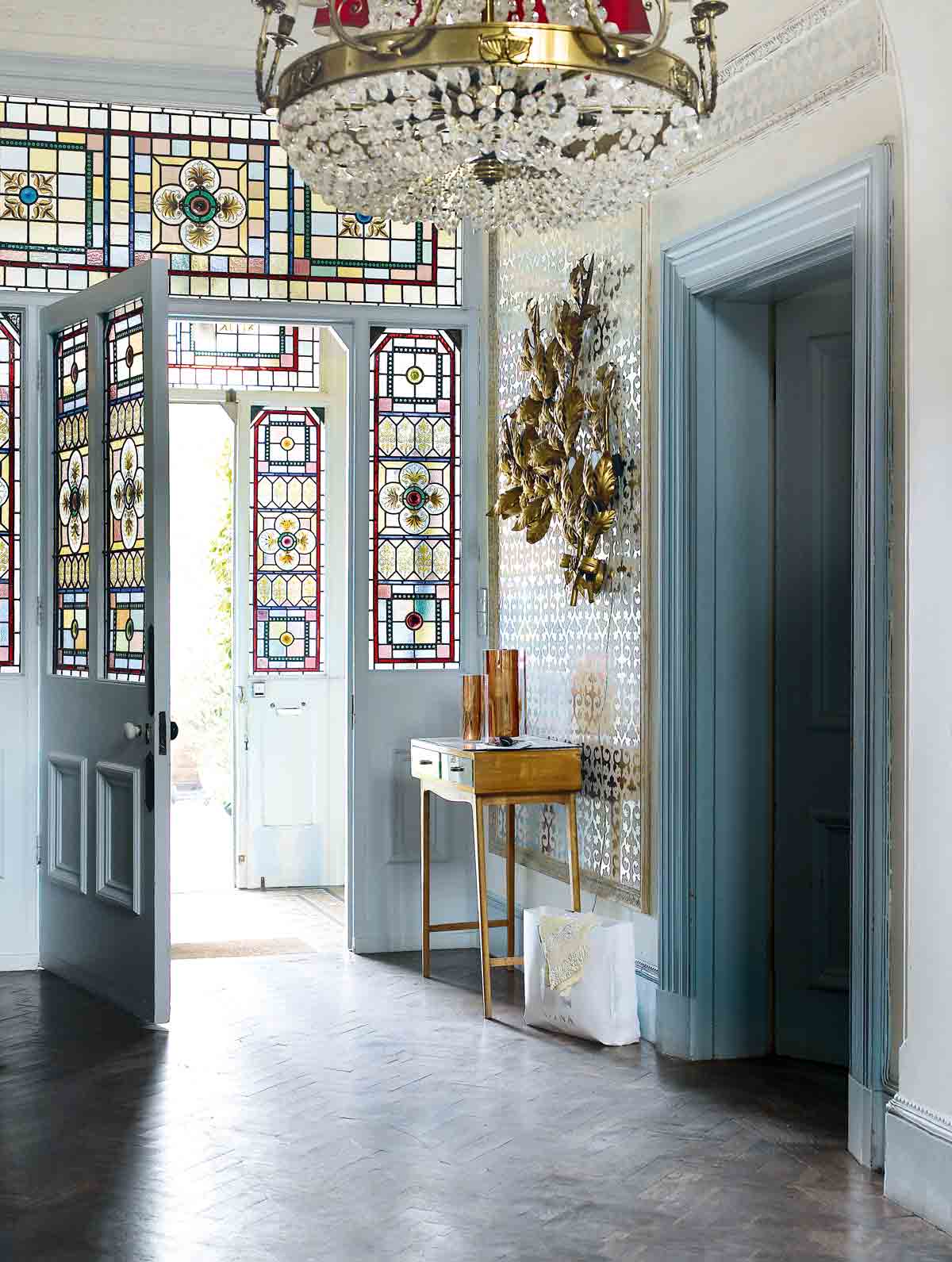
Traditionally, leadlights differ from stained glass windows because of their setting and simplicity. Rather than ornate, figurative designs found typically in churches, these were designed for private houses, usually with geometric patterns or formal plant motifs. Leadlights date back thousands of years but it wasn’t until the late Middle Ages that they were used extensively, only for the popularity of the leadlight to wain with the arrival of the sash window.
However, the gothic revival sparked a trend for all things Medieval in the mid-nineteenth century and so it was back in fashion, right up until the late Thirties. They became a typical feature of many homes, almost always made out of pieces of diamond-shaped cut glass, often creating a ‘diaper’ pattern. Art Nouveau styles focused on organic motifs including elongated curved stems and petals, while the Art Deco designs consisted of geometric shapes and the classic sunburst. The austerity of the war period meant that stained glass production practically ceased. Years later, homeowners are keen to reinstate these traditional details and there’s now a trend for installing salvaged leadlights to create feature windows in new-build homes.
Details:This leadlight design is in a Victorian property in London. The Glass Studio, Coriander and South London Stained Glass are all makers and restorers of traditional leadlights. Find salvage suppliers at salvoweb.com.
The Livingetc newsletters are your inside source for what’s shaping interiors now - and what’s next. Discover trend forecasts, smart style ideas, and curated shopping inspiration that brings design to life. Subscribe today and stay ahead of the curve.
The homes media brand for early adopters, Livingetc shines a spotlight on the now and the next in design, obsessively covering interior trends, color advice, stylish homeware and modern homes. Celebrating the intersection between fashion and interiors. it's the brand that makes and breaks trends and it draws on its network on leading international luminaries to bring you the very best insight and ideas.